We cannot ignore opium when talking about plants in Laos, but at the same time the subject is so vast and always so “burning” that it will be difficult to speak about it soberly.
Opium is not a plant but the exudate of a plant: the Opium Poppy. This Poppy of Mediterranean origin was introduced to India and China by the Arabs, even before the time of the prophet.
The botanical name Papaver comes from the Celtic papa, the name of the porridge mixed with latex that was given to children to make them sleep. Somniferum means in Latin “which gives sleep”. The name generally used in Western languages, “opium”, comes, according to Littré, from the Greek opion, “juice”. In Asian languages, it is often the Chinese name that is used: “ya ying“, “tobacco from the East”. In Lao we say ya fin, in Khmer afien, a name that could also have been borrowed from the Arabic afyum, afion.
It is a large annual plant with wavy leaves, embracing at the top of the stems. The large flowers have four red, white or purple petals that fall quickly. The stamens are very numerous. The fruit is a large globular capsule that contains many seeds; it is recognizable by the disk that surmounts it. When it is not yet ripe it contains a gummy latex that is the origin of opium and heroin and, therefore, morphine, codeine, etc.
This plant was first a medicinal plant whose seeds were also used in cooking, but with the discovery of the use of latex as a euphoric, its cultivation and trade have taken on an unequaled scale.
In Laos, it is traditionally the mountain farmers, especially the Hmong, who cultivate this plant, often alternating with others such as corn. The first latex harvest is generally around March. The capsules are incised on the plant with a sort of small three-pronged knife. We then wait until the latex has coagulated to harvest it. The opium is preserved in the form of balls that will be kept or sold depending on the market. To combat trafficking and the dramatic consequences of its consumption, the Lao government has increased aid programs for small farmers, in particular by promoting new crops such as grapes. We can thus observe a decline in the cultivation of this opiate in some years and a rise afterwards. The opium economy remains a key socio-political issue to this day, both nationally and internationally.
On ne peut pas faire l’impasse sur l’opium lorsque l’on parle des plantes au Laos, mais en même temps le sujet est si vaste et toujours si « brûlant » que l’on aura du mal à en parler sobrement.
L’opium n’est pas une plante mais l’exsudat d’une plante : le pavot à opium. Ce pavot d’origine méditerranéenne fut introduit en Inde comme en Chine par les Arabes, avant même l‘époque du prophète.
Le nom botanique papaver viendrait du celtique papa nom de la bouillie additionnée de latex que l’on donnait aux enfants pour les faire dormir. Somniferum signifie en latin « qui donne le sommeil ». Le nom généralement employé dans les langues occidentales, « opium », viendrait, selon Littré, du grec opion, « suc ». Dans les langues asiatiques c’est souvent le nom chinois qui est repris : “ya ying”, “le tabac venu d’Orient”. En lao on dira ya fin, en khmer afien, nom qui aurait pu également être emprunté à l’arabe afyum, afion.
C’est une grande plante annuelle aux feuilles ondulées, embrassantes en haut des tiges.
Les grandes fleurs ont quatre pétales rouges, blancs ou violets qui tombent rapidement. Les étamines sont très nombreuses. Le fruit est une grosse capsule globuleuse qui contient de nombreuses graines ; il est reconnaissable au disque qui le surmonte. Lorsqu’il n’est pas encore mûr il contient un latex gommeux qui est à l’origine de l’opium et de l’héroïne et, donc de la morphine, de la codéine…etc.
Cette plante a d’abord été une plante médicinale dont les graines étaient employées aussi en cuisine mais avec la découverte de l’utilisation du latex comme euphorisant sa culture et son commerce ont pris une ampleur inégalée.
Au Laos, traditionnellement ce sont les agriculteurs de montagne, en particulier les Hmong qui cultivent cette plante, souvent en alternance avec d’autres comme le maïs. C’est en général vers le mois de mars que se fait la première récolte de latex. Les capsules sont incisées sur pied avec une sorte de petit couteau à trois dents. On attend ensuite que le latex se soit coagulé pour le récolter. L’opium est conservé sous forme de boulettes qui seront conservées ou vendues en fonction du marché.
Pour lutter contre les trafics et les conséquences dramatiques de sa consommation le gouvernement lao a multiplié les programmes d’aide aux petits paysans en particulier en favorisant de nouvelles cultures comme celle du raisin. On peut observer ainsi une baisse de la culture de cet opiacé certaines années et une remontée ensuite. L’économie de l’opium demeure jusqu’à nos jours un enjeu socio-politique essentiel, que ce soit sur le plan national ou international.
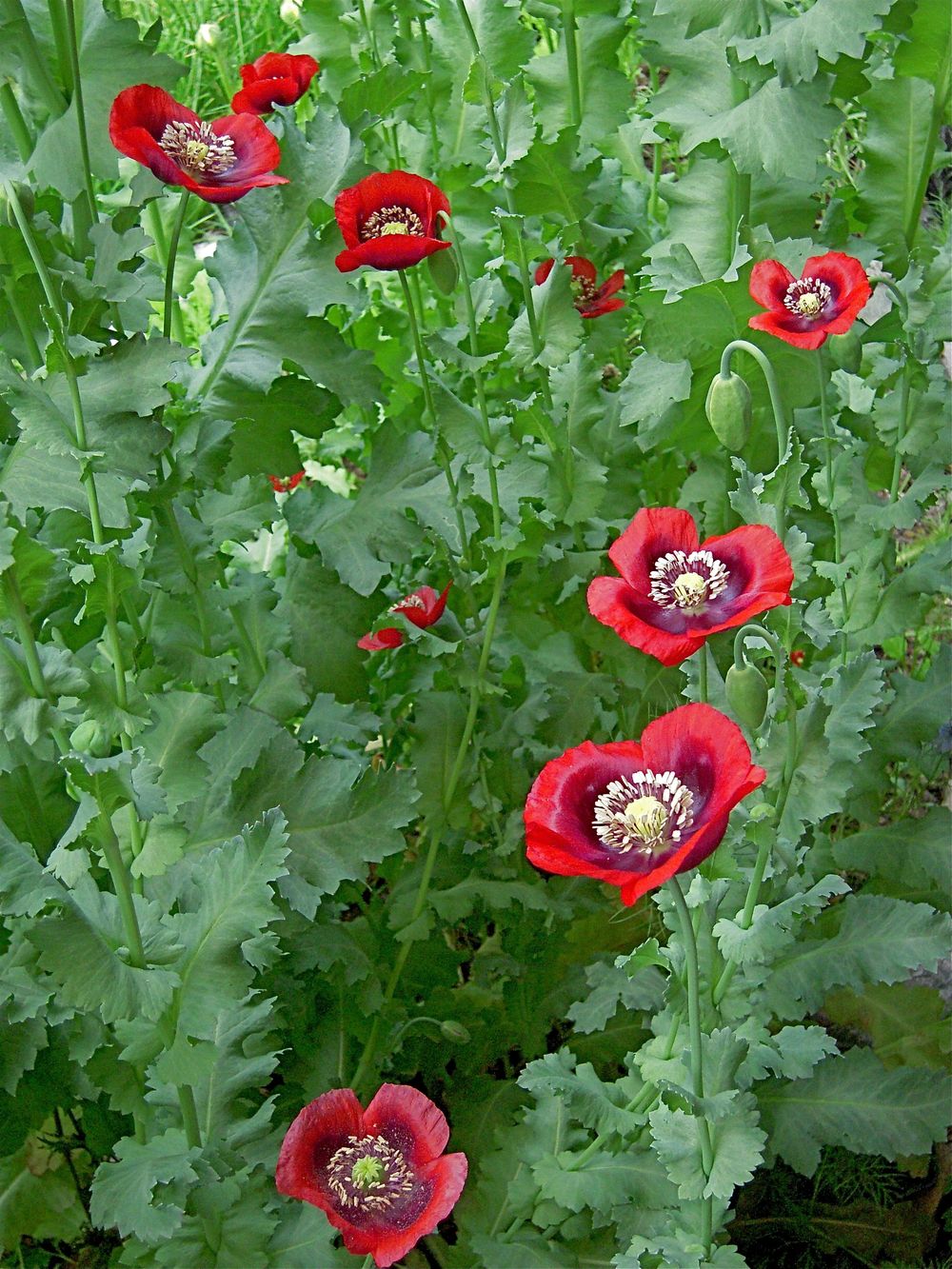
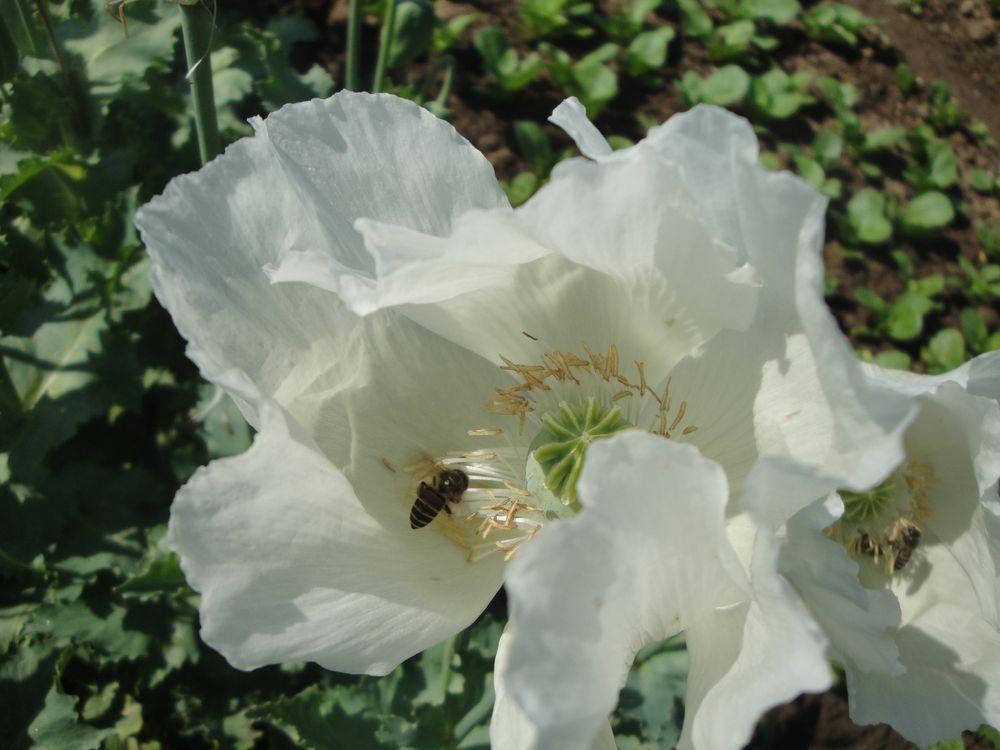
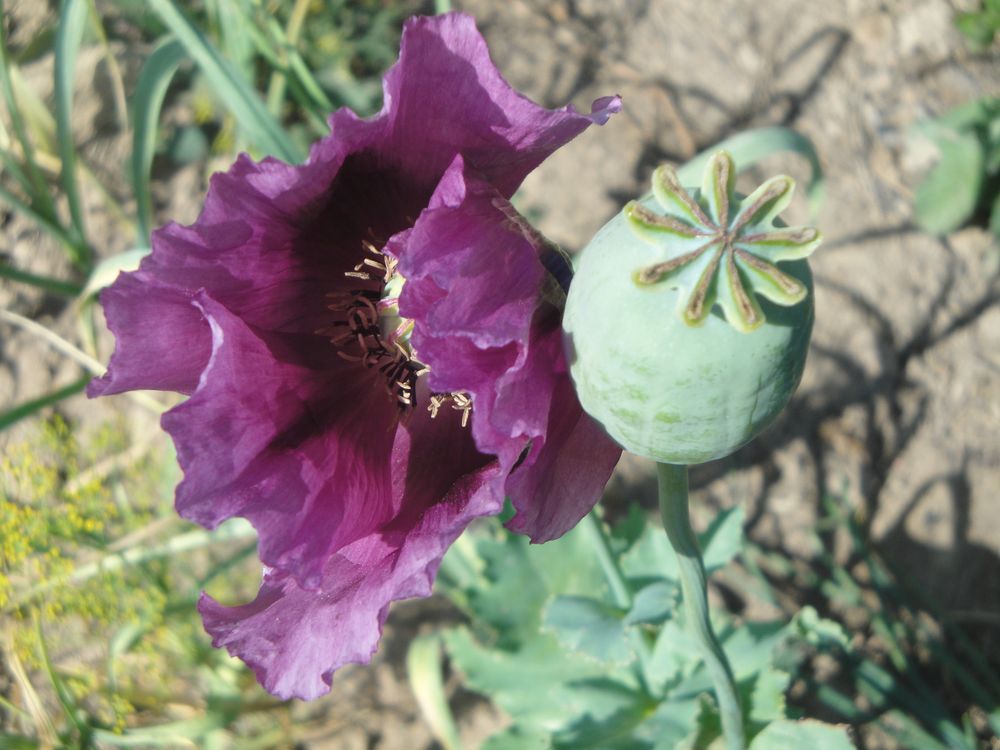
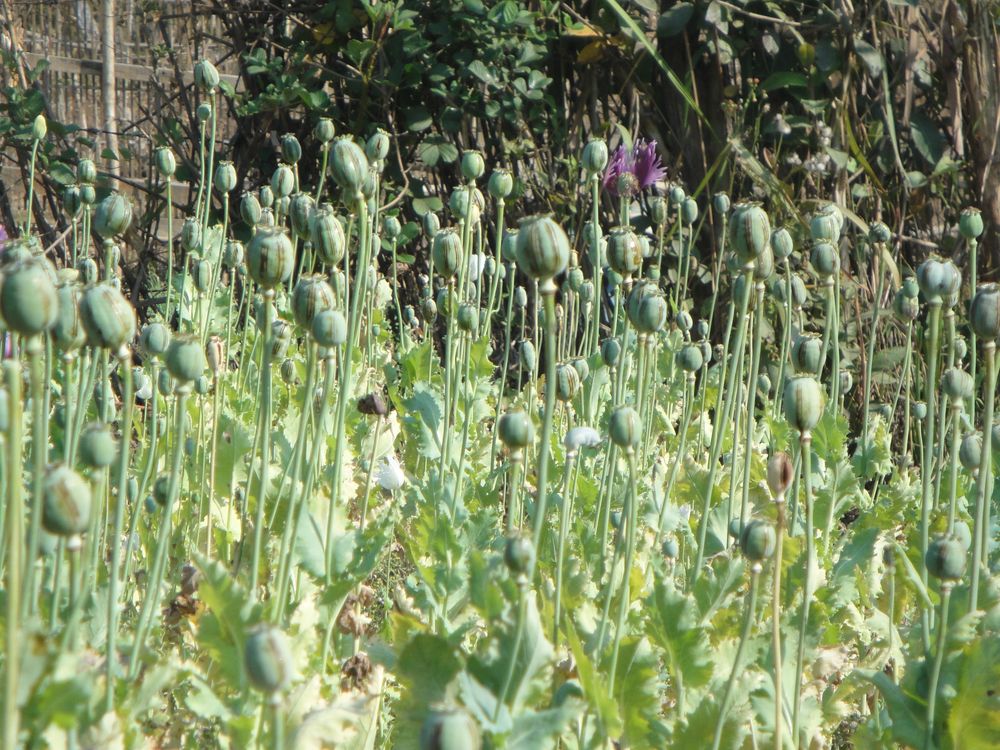
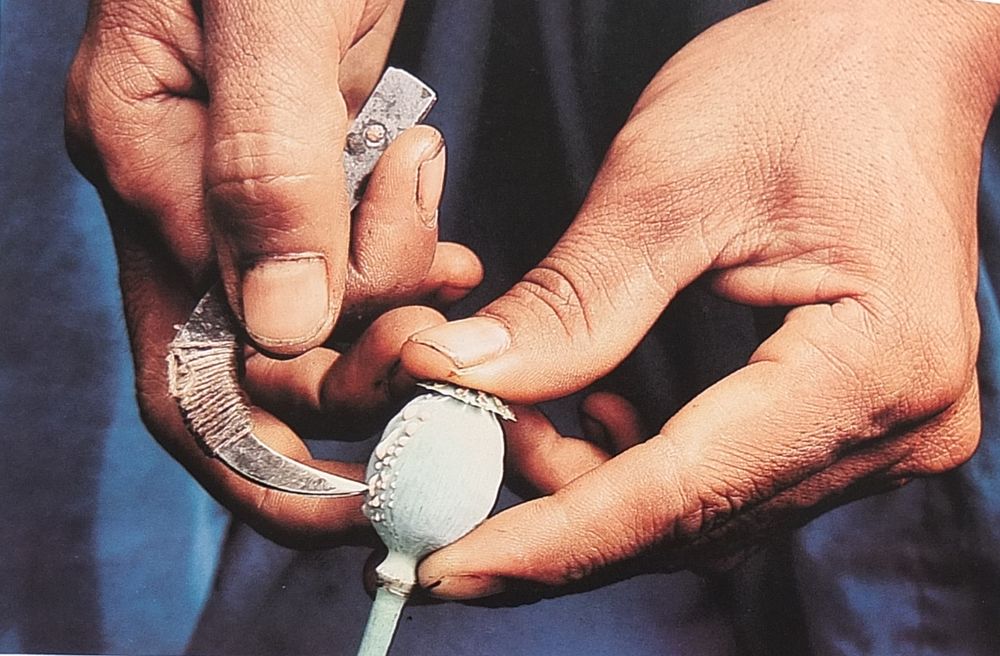
We cannot ignore opium when talking about plants in Laos, but at the same time the subject is so vast and always so “burning” that it will be difficult to speak about it soberly.
Opium is not a plant but the exudate of a plant: the Opium Poppy. This Poppy of Mediterranean origin was introduced to India and China by the Arabs, even before the time of the prophet.
The botanical name Papaver comes from the Celtic papa, the name of the porridge mixed with latex that was given to children to make them sleep. Somniferum means in Latin “which gives sleep”. The name generally used in Western languages, “opium”, comes, according to Littré, from the Greek opion, “juice”. In Asian languages, it is often the Chinese name that is used: “ya ying“, “tobacco from the East”. In Lao we say ya fin, in Khmer afien, a name that could also have been borrowed from the Arabic afyum, afion.
It is a large annual plant with wavy leaves, embracing at the top of the stems. The large flowers have four red, white or purple petals that fall quickly. The stamens are very numerous. The fruit is a large globular capsule that contains many seeds; it is recognizable by the disk that surmounts it. When it is not yet ripe it contains a gummy latex that is the origin of opium and heroin and, therefore, morphine, codeine, etc.
This plant was first a medicinal plant whose seeds were also used in cooking, but with the discovery of the use of latex as a euphoric, its cultivation and trade have taken on an unequaled scale.
In Laos, it is traditionally the mountain farmers, especially the Hmong, who cultivate this plant, often alternating with others such as corn. The first latex harvest is generally around March. The capsules are incised on the plant with a sort of small three-pronged knife. We then wait until the latex has coagulated to harvest it. The opium is preserved in the form of balls that will be kept or sold depending on the market. To combat trafficking and the dramatic consequences of its consumption, the Lao government has increased aid programs for small farmers, in particular by promoting new crops such as grapes. We can thus observe a decline in the cultivation of this opiate in some years and a rise afterwards. The opium economy remains a key socio-political issue to this day, both nationally and internationally.
On ne peut pas faire l’impasse sur l’opium lorsque l’on parle des plantes au Laos, mais en même temps le sujet est si vaste et toujours si « brûlant » que l’on aura du mal à en parler sobrement.
L’opium n’est pas une plante mais l’exsudat d’une plante : le pavot à opium. Ce pavot d’origine méditerranéenne fut introduit en Inde comme en Chine par les Arabes, avant même l‘époque du prophète.
Le nom botanique papaver viendrait du celtique papa nom de la bouillie additionnée de latex que l’on donnait aux enfants pour les faire dormir. Somniferum signifie en latin « qui donne le sommeil ». Le nom généralement employé dans les langues occidentales, « opium », viendrait, selon Littré, du grec opion, « suc ». Dans les langues asiatiques c’est souvent le nom chinois qui est repris : “ya ying”, “le tabac venu d’Orient”. En lao on dira ya fin, en khmer afien, nom qui aurait pu également être emprunté à l’arabe afyum, afion.
C’est une grande plante annuelle aux feuilles ondulées, embrassantes en haut des tiges.
Les grandes fleurs ont quatre pétales rouges, blancs ou violets qui tombent rapidement. Les étamines sont très nombreuses. Le fruit est une grosse capsule globuleuse qui contient de nombreuses graines ; il est reconnaissable au disque qui le surmonte. Lorsqu’il n’est pas encore mûr il contient un latex gommeux qui est à l’origine de l’opium et de l’héroïne et, donc de la morphine, de la codéine…etc.
Cette plante a d’abord été une plante médicinale dont les graines étaient employées aussi en cuisine mais avec la découverte de l’utilisation du latex comme euphorisant sa culture et son commerce ont pris une ampleur inégalée.
Au Laos, traditionnellement ce sont les agriculteurs de montagne, en particulier les Hmong qui cultivent cette plante, souvent en alternance avec d’autres comme le maïs. C’est en général vers le mois de mars que se fait la première récolte de latex. Les capsules sont incisées sur pied avec une sorte de petit couteau à trois dents. On attend ensuite que le latex se soit coagulé pour le récolter. L’opium est conservé sous forme de boulettes qui seront conservées ou vendues en fonction du marché.
Pour lutter contre les trafics et les conséquences dramatiques de sa consommation le gouvernement lao a multiplié les programmes d’aide aux petits paysans en particulier en favorisant de nouvelles cultures comme celle du raisin. On peut observer ainsi une baisse de la culture de cet opiacé certaines années et une remontée ensuite. L’économie de l’opium demeure jusqu’à nos jours un enjeu socio-politique essentiel, que ce soit sur le plan national ou international.










We cannot ignore opium when talking about plants in Laos, but at the same time the subject is so vast and always so “burning” that it will be difficult to speak about it soberly.
Opium is not a plant but the exudate of a plant: the Opium Poppy. This Poppy of Mediterranean origin was introduced to India and China by the Arabs, even before the time of the prophet.
The botanical name Papaver comes from the Celtic papa, the name of the porridge mixed with latex that was given to children to make them sleep. Somniferum means in Latin “which gives sleep”. The name generally used in Western languages, “opium”, comes, according to Littré, from the Greek opion, “juice”. In Asian languages, it is often the Chinese name that is used: “ya ying“, “tobacco from the East”. In Lao we say ya fin, in Khmer afien, a name that could also have been borrowed from the Arabic afyum, afion.
It is a large annual plant with wavy leaves, embracing at the top of the stems. The large flowers have four red, white or purple petals that fall quickly. The stamens are very numerous. The fruit is a large globular capsule that contains many seeds; it is recognizable by the disk that surmounts it. When it is not yet ripe it contains a gummy latex that is the origin of opium and heroin and, therefore, morphine, codeine, etc.
This plant was first a medicinal plant whose seeds were also used in cooking, but with the discovery of the use of latex as a euphoric, its cultivation and trade have taken on an unequaled scale.
In Laos, it is traditionally the mountain farmers, especially the Hmong, who cultivate this plant, often alternating with others such as corn. The first latex harvest is generally around March. The capsules are incised on the plant with a sort of small three-pronged knife. We then wait until the latex has coagulated to harvest it. The opium is preserved in the form of balls that will be kept or sold depending on the market. To combat trafficking and the dramatic consequences of its consumption, the Lao government has increased aid programs for small farmers, in particular by promoting new crops such as grapes. We can thus observe a decline in the cultivation of this opiate in some years and a rise afterwards. The opium economy remains a key socio-political issue to this day, both nationally and internationally.
On ne peut pas faire l’impasse sur l’opium lorsque l’on parle des plantes au Laos, mais en même temps le sujet est si vaste et toujours si « brûlant » que l’on aura du mal à en parler sobrement.
L’opium n’est pas une plante mais l’exsudat d’une plante : le pavot à opium. Ce pavot d’origine méditerranéenne fut introduit en Inde comme en Chine par les Arabes, avant même l‘époque du prophète.
Le nom botanique papaver viendrait du celtique papa nom de la bouillie additionnée de latex que l’on donnait aux enfants pour les faire dormir. Somniferum signifie en latin « qui donne le sommeil ». Le nom généralement employé dans les langues occidentales, « opium », viendrait, selon Littré, du grec opion, « suc ». Dans les langues asiatiques c’est souvent le nom chinois qui est repris : “ya ying”, “le tabac venu d’Orient”. En lao on dira ya fin, en khmer afien, nom qui aurait pu également être emprunté à l’arabe afyum, afion.
C’est une grande plante annuelle aux feuilles ondulées, embrassantes en haut des tiges.
Les grandes fleurs ont quatre pétales rouges, blancs ou violets qui tombent rapidement. Les étamines sont très nombreuses. Le fruit est une grosse capsule globuleuse qui contient de nombreuses graines ; il est reconnaissable au disque qui le surmonte. Lorsqu’il n’est pas encore mûr il contient un latex gommeux qui est à l’origine de l’opium et de l’héroïne et, donc de la morphine, de la codéine…etc.
Cette plante a d’abord été une plante médicinale dont les graines étaient employées aussi en cuisine mais avec la découverte de l’utilisation du latex comme euphorisant sa culture et son commerce ont pris une ampleur inégalée.
Au Laos, traditionnellement ce sont les agriculteurs de montagne, en particulier les Hmong qui cultivent cette plante, souvent en alternance avec d’autres comme le maïs. C’est en général vers le mois de mars que se fait la première récolte de latex. Les capsules sont incisées sur pied avec une sorte de petit couteau à trois dents. On attend ensuite que le latex se soit coagulé pour le récolter. L’opium est conservé sous forme de boulettes qui seront conservées ou vendues en fonction du marché.
Pour lutter contre les trafics et les conséquences dramatiques de sa consommation le gouvernement lao a multiplié les programmes d’aide aux petits paysans en particulier en favorisant de nouvelles cultures comme celle du raisin. On peut observer ainsi une baisse de la culture de cet opiacé certaines années et une remontée ensuite. L’économie de l’opium demeure jusqu’à nos jours un enjeu socio-politique essentiel, que ce soit sur le plan national ou international.


